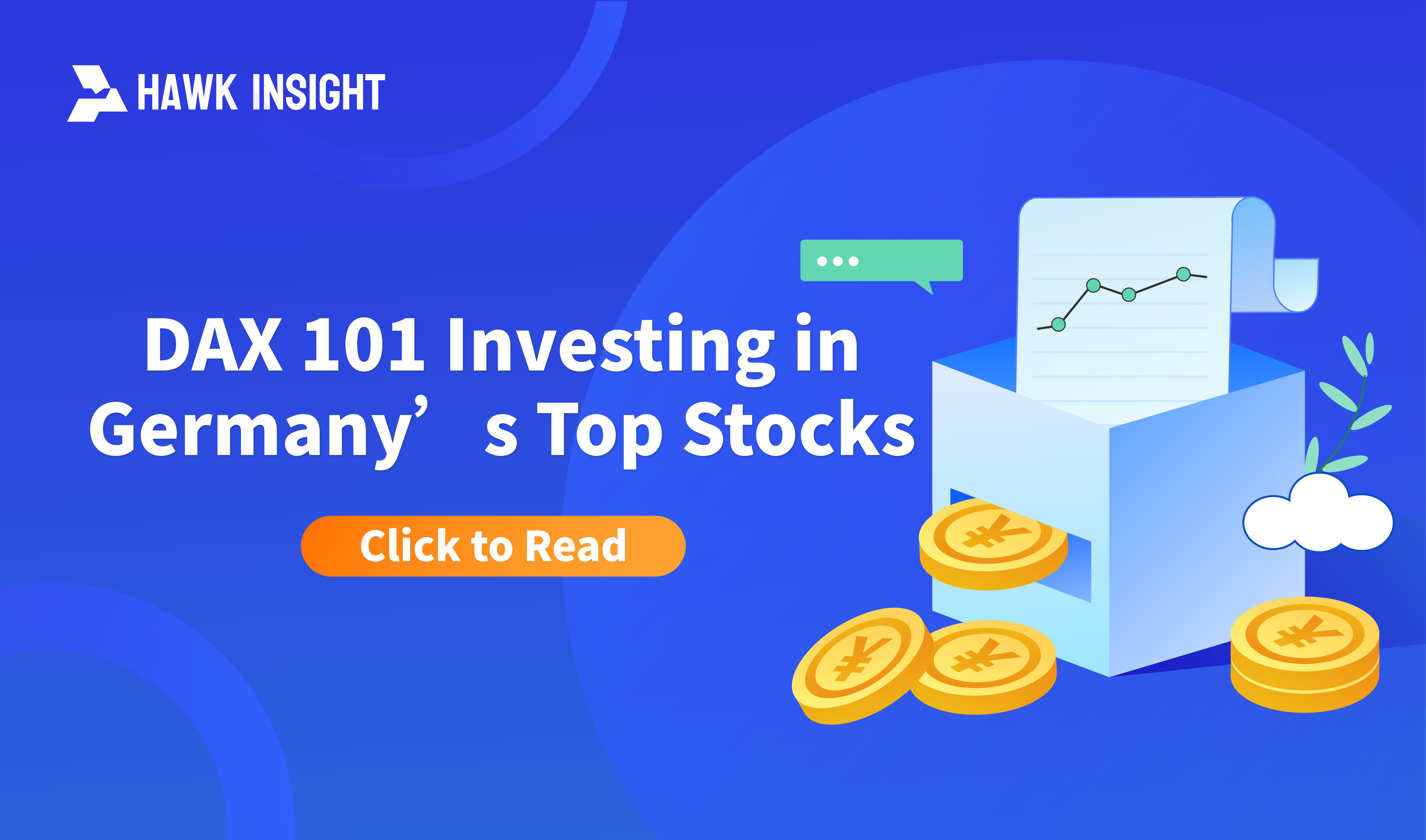DAX 101 – Investing in Germany’s Top Stocks
Learn about the DAX, the top 40 German stocks & how to invest in them.Get insights on historical performance, factors affecting & strategies for success.

What is the DAX Stock Market?
The DAX, or Deutscher Aktienindex, first launched in 1988 by Deutsche Börse, the operator of the German Stock Exchange, is regularly calculated and published to show the overall performance of the German stock market, and is one of the most influential blue-chip indices of the German stock market.
As the core index of the German market, the DAX includes the 40 largest and most actively traded companies listed on the Frankfurt Stock Exchange, providing insight not only into the German economy, but also reflecting the position of Germany and its economically important companies in the global market.
Components of the DAX
The DAX index consists of 40 companies selected based on market capitalization, liquidity, and free float. These companies represent major sectors of the German economy, including industry, finance, technology, and consumer goods. Notable current components of the DAX include:
- Siemens AG (SIE.DE): A leading global industrial manufacturing company specializing in energy, automation, and digitalization solutions.
- BMW AG (BMW.DE): A renowned luxury automobile manufacturer known for its innovation and quality.
- Allianz SE (ALV.DE): One of the world’s largest insurance companies, offering a wide range of insurance and asset management services.
- SAP SE (SAP.DE): A leading provider of enterprise application software, known for its enterprise resource planning (ERP) systems.
Historical Performance of the DAX
Since its inception, the DAX has experienced several economic cycles. It started at 1,000 points in 1988 and reached an all-time high of over 13,000 points in 2007 before the financial crisis led to a significant decline. Despite this, the index quickly recovered and has shown a strong upward trend since then, achieving new all-time highs above 16,000 points in recent years. Over the past decade, the DAX has demonstrated steady growth, reflecting the resilience of the German economy and its long-term potential.
Investing in the DAX
There are several ways to invest in the DAX:
- Buying Individual Stocks: Investors can purchase shares of the companies that make up the DAX. This requires in-depth knowledge of individual company financials and market prospects.
- Investing in ETFs: Exchange-traded funds (ETFs) that track the performance of the DAX offer a convenient way to invest in the index. Examples include iShares Core DAX UCITS ETF (ISIN: DE0005933931) and Xtrackers DAX UCITS ETF (ISIN: DE0005933931). These ETFs aim to replicate the performance of the DAX and provide broad market exposure.
Factors Affecting the DAX
The performance of the DAX is influenced by various factors, including:
- Global Economic Conditions: Global economic slowdowns or trade policy changes can impact DAX constituent companies.
- Political Events: Domestic policy changes in Germany or political uncertainties within the European Union can affect market sentiment.
- Company Performance: The financial health, profitability, and competitive position of DAX constituent companies directly impact their stock prices and the overall index.
DAX and Its Relation to the European Union and Global Economy
Germany, as the largest economy in the European Union, has the DAX as a barometer for the EU economy's overall performance. The index provides valuable insights into the health of the EU economy and potential growth prospects. Additionally, as a major player in the global economy, the performance of the DAX can offer insights into the global economic outlook. Investors and analysts closely monitor the DAX to gauge future global growth potential.
Risks and Opportunities
Investing in the DAX presents both opportunities and risks:
- Opportunities: The index offers long-term growth potential, stability of the German economy, and leadership positions of its constituent companies in the global market.
- Risks: Market volatility, economic downturns, and international trade tensions pose risks to DAX investments.
Strategies for Investing in the DAX
Several strategies can be employed when investing in the DAX:
- Value Investing: Identifying undervalued DAX constituents based on their long-term growth potential.
- Growth Investing: Focusing on companies with high growth potential, particularly in sectors like technology and innovation.
- Dividend Investing: Choosing companies with a stable dividend payout to generate regular income.
Investors should select a strategy that aligns with their investment goals and risk tolerance. Consulting with a financial advisor before making investment decisions is advisable.
Conclusion
The DAX is a prominent index providing a comprehensive view of the performance of Germany's top companies. Understanding its components, historical performance, and influencing factors is crucial for making informed investment decisions.
By recognizing the associated risks and opportunities and consulting with financial advisors, investors can leverage the DAX’s long-term growth potential. Staying well-informed and making prudent investment choices can help investors benefit from the DAX’s performance over time.
Disclaimer: The views in this article are from the original Creator and do not represent the views or position of Hawk Insight. The content of the article is for reference, communication and learning only, and does not constitute investment advice. If it involves copyright issues, please contact us for deletion.